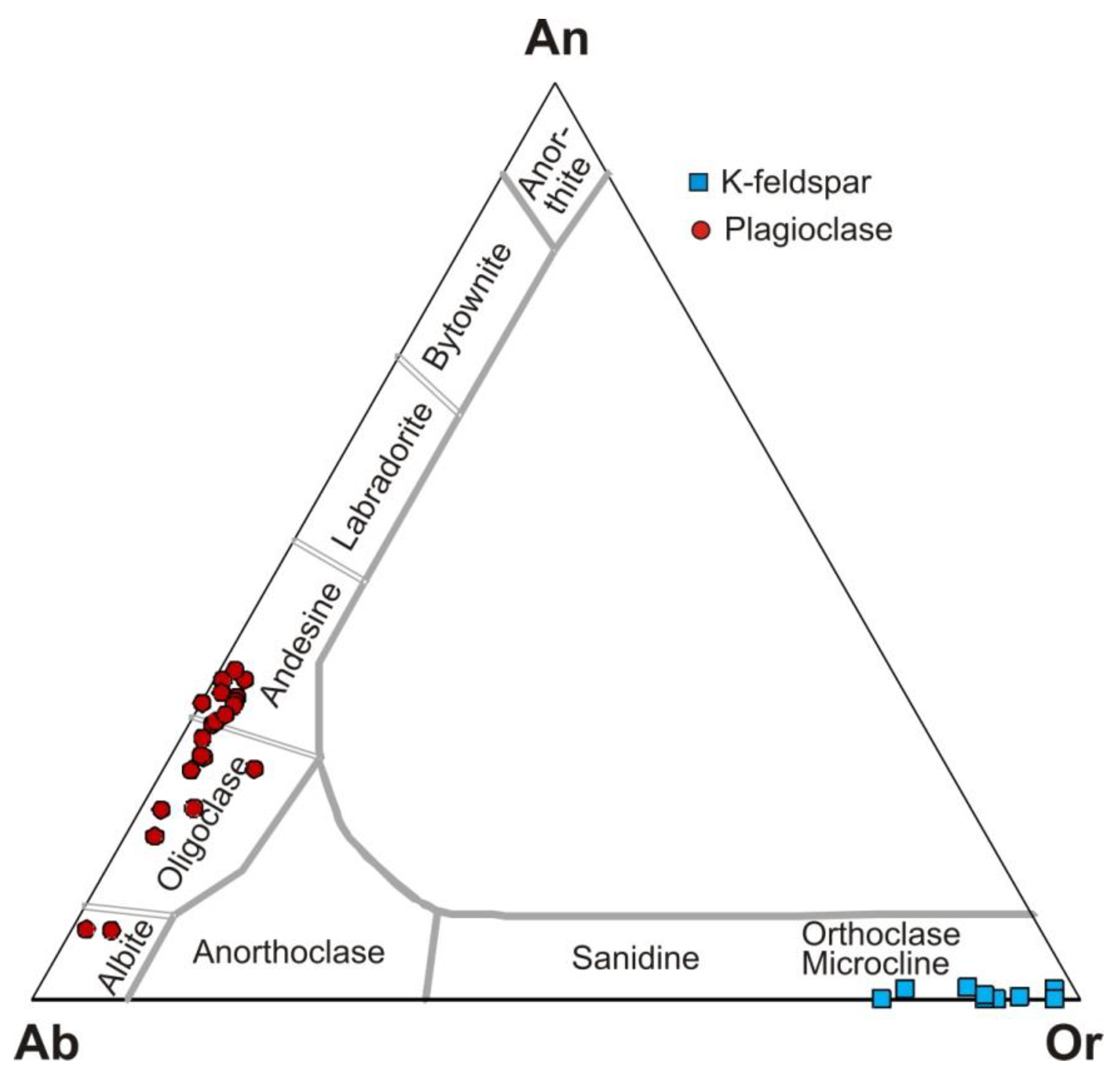
The first mineral to crystallise will be (An/Di/Fo). At a temperature of ☌ the liquid will start to crystallise. Because there are 3 components, the variance, or number of degrees of freedom, F= (0/1/2/3). The bulk composition A initially is (1/2/3/4) phase at an initial temperature of 1500☌. Choose one and type in the answer in the blank space provided. One of these choices listed in the brackets is the correct answer. Next to these are a list of possible answers, e.g. Task Each answer required is marked by a _. Use the phase rule in describing the liquid line of descent. Remember that the phase rule is F= C-0 + 1 for isobaric (constant pressure) phase diagrams F= the number of variables, such as temperature (T), pressure (P) or composition (X), that can be changed independently, C = the number of chemical components present in the system, o = the number of phases Problem statement Given the Fo-Di-An eutectic ternary phase diagram in Figure 1 describe the crystallisation sequence of a magma of composition A, as shown in Figure 1, that will start to cool at a temperature of 1500☌. The red lines represent cotectic lines along which two phases (minerals) co-crystallise and the point M represents the eutectic minimum point in the system, the lowest temperature at which a magma, melt or liquid will still be present in the system.

Figure 1 is an example of a ternary eutectic phase diagram which has three components, the Mg-rich end-member of olivine, forsterite (abbreviated Fo), with chemical formula Mg2SiO4, calcic plagioclase, anorthite (abbreviated An), with chemical formula CaAlzSizOs, and diopside, a clinopyroxene (abbreviated Di), with chemical formula MgCaSiz06. It does not store any personal data.Transcribed image text: Ternary (3-component) phase diagrams Ternary eutectic phase diagram 1. The cookie is set by the GDPR Cookie Consent plugin and is used to store whether or not user has consented to the use of cookies. The cookie is used to store the user consent for the cookies in the category "Performance". This cookie is set by GDPR Cookie Consent plugin. The cookie is used to store the user consent for the cookies in the category "Other. The cookies is used to store the user consent for the cookies in the category "Necessary". The cookie is set by GDPR cookie consent to record the user consent for the cookies in the category "Functional". The cookie is used to store the user consent for the cookies in the category "Analytics". These cookies ensure basic functionalities and security features of the website, anonymously. Necessary cookies are absolutely essential for the website to function properly. Similarly, Ca-rich compositions lie towards the right of the diagram, since clinopyroxene is the only mineral in the diagram that contains Ca. This is because pyroxenes stoichiometrically contain more silica than olivine. SiO 2-poor compositions lie close to the top vertex (dunite), whereas SiO 2-rich compositions occur at the base of the diagram. This diagram defines very well the first-order chemical variability of ultramafic rocks. ‘Olivine’ is specified in the name in pyroxenite varieties with an olivine content between 5 and 40% (e.g. Websterite: consisting of clinopyroxene and orthopyroxene.Ĭlinopyroxenite: with clinopyroxene > 90%. Orthopyroxenite: with orthopyroxene > 90%. Wehrlite: consisting largely of olivine and clinopyroxene. Lherzolite: a peridotite with olivine, orthopyroxene, and clinopyroxene. Harzburgite: consisting predominantly of olivine and orthopyroxene.

Two broad fields are separated based on the modal content of olivine: peridotites (olivine > 40%) and pyroxenites (olivine 90%). For ultramafic rocks containing hornblende (extremely rare) the diagram below should be used instead. Most ultramafic rocks consist of the three minerals in this diagram: olivine, ferromagnesian pyroxene (orthopyroxene, enstatite), and calcium pyroxene (clinopyroxene, diopside). IUGS classification of ultramafic rocks with olivine, orthopyroxene, and clinopyroxene.


 0 kommentar(er)
0 kommentar(er)
